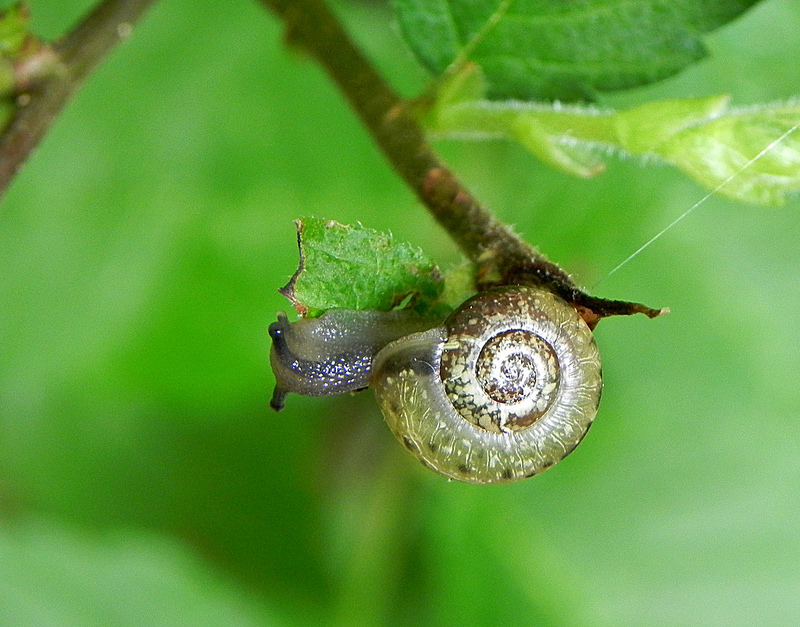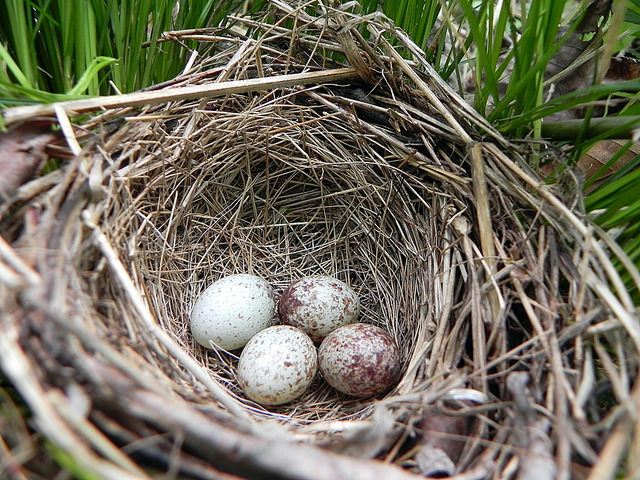One of the things that I find fascinating is how little we know about how nature works. To be sure, there is a lot of information out there that we do know, but so much more is unknown.
Some things are pretty basic. Many people know that a food chain consists of a plant that gets energy from the sun, followed by an animal that eats the plant, an animal that eats the animal that eats the plant, an animal that eats the animal that ate the animal that ate the plant and so on. It’s not a hard concept in theory, but in application it is easy to be blind to what is happening.
For years, people used a pesticide called DDT that travelled up the food chain in ways that affected wildlife far from the places where it was being applied. DDT killed insects that were eaten by other animals. The more insects an animal ate, the more the DDT concentrated in that animal. If that animal was eaten by another, that animal ended up with DDT in its body. The end result was that many birds of prey, such as Bald Eagles and Ospreys, couldn’t have young. Their eggs were softened by the DDT in their system and rarely hatched. Their numbers plummeted.
While DDT is now banned in the United States, it is still used in tropical areas as a way to control the mosquitoes that cause malaria. In fact, the inventor of DDT won a Nobel prize, in part for the fact that DDT helped eradicate malaria from many parts of the world. Malaria was once common in the Southern United States, but a government program in the late 1940’s turned it into a problem that is still rare today.
Eagles, Ospreys and other birds have now recovered from the effects of pesticides, but we continue to find odd ways that people affect food chains without realizing it. That is key. I don’t believe that the people who used DDT were maliciously trying to affect wildlife. Their actions accidentally caused harm, it was unintended. DDT was a chemical that eliminated bedbugs and malaria, so it’s easy to understand why people used so much of it.
It’s easy to look at the past and point fingers, but it’s harder to look at things today and see what is happening. We still affect food chains, but it takes an unusual amount of insight to figure out how.
For example, songbird numbers have been dropping for decades. It’s been something that scientists have been puzzling over for a long time. Recently, several causes have come to light and many of them are related to food chains.

One less obvious one is acid rain. According to Cornell University, acid rain removes calcium from the soil. This calcium forms the building blocks for snails to make their shells. Less calcium means fewer snails. Some birds, such as the Wood Thrush, get the calcium for their eggs from the snails that they eat. They lay fewer eggs in areas with acid rain, because there is less calcium available for them. Wood Thrush numbers are down 50% since 1966, according to the American Bird Conservancy. Is acid rain the only culprit? No one truly knows.
Another problem is deer. Large numbers of deer in a forest stop young trees from growing and may even eat much of the plant life on the forest floor. This reduces the number of nesting places for birds. According to an article in Scientific American, one study found 55% fewer birds on islands that were overpopulated with deer, with the biggest declines in birds that lived on the forest floor.
It is these secondhand effects of things that are hard to predict. If you had asked me if acid rain destroys calcium in the forest, I could have said yes. If you asked if acid rain hurt birds that ate snails that needed calcium in the soil, that is logic that would have required a lot of thought. Luckily, someone out there already did the thinking for me.

One big thing that is affecting bird populations right now is the removal of the bottom of the food chain. Song birds, as a general rule, feed their young caterpillars. One study by Doug Tallamy showed that one chickadee family fed their young 350 to 570 caterpillars a day. That is 6,000 to 9,000 caterpillars to raise one family of chickadees in less than a month.
Caterpillars are notoriously fussy eaters. Monarchs are known for only eating milkweed, but many other caterpillars are fussy too. Some only eat oaks, some only eat carrots, some only eat elms. One thing that caterpillars agree on is that they mostly use plants that are from North America. They are incredibly unlikely to eat a tree from China or Europe.
Planting a Gingko tree and Bradford Pear, both native to China, hosts no caterpillars. As far as the food chain is concerned, they might as well be living statues. As we increasingly plant trees and other plants from other parts of the world, the number of caterpillars goes down. As the caterpillars disappear, so do the birds that use them.
Any study of nature is essentially complicated. We simply don’t have the ability to track all the changes that happen and how they play out to have a good understanding of how all the pieces fit together and what they all do. When we do isolate something, it seems impossibly simple. Birds are disappearing, in part, because we planted trees that the caterpillars that the birds feed their young can’t eat. Fewer caterpillars means fewer baby birds that can survive. This simple statement took a decade to gather evidence for, and more research is always being done.
There are solutions to some of these problems. Find, and request, native plants at your local stores to plant in your yard. This encourages caterpillars and allows more birds to nest in your yard. I had eight different birds that I could find nesting in my small yard last year. The number of caterpillars they must have found in my neighborhood is staggering.
You can also thank a deer hunter. While they fill their freezer with meat for the year, they are also helping forests to regenerate and creating habitat for nesting birds. Our forests are missing the cougars and wolves that ate the deer 200 years ago. Hunters fill in that vital gap to keep deer numbers from going out of control.
People affect food chains in nature in a lot of ways. Most of those ways have probably not been figured out yet. What we know about the intricacies of nature is small compared to how much we need to learn. For what we do know, we can take action on. Perhaps bird numbers will start to increase again if everyone does a little something.
Audubon Community Nature Center builds and nurtures connections between people and nature. ACNC is located just east of Route 62 between Warren and Jamestown. The trails are open from dawn to dusk as is Liberty, the Bald Eagle. The Nature Center is open from 10 a.m. until 4:30 p.m. daily except Sunday when it opens at 1 p.m. More information can be found online at auduboncnc.org or by calling (716) 569-2345.


Recent Comments